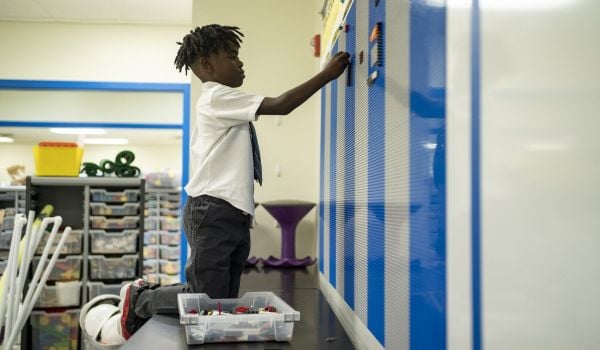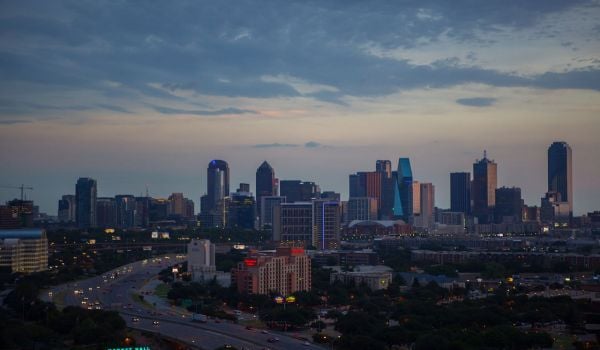Michael Sorrell admits that volunteering as chair of the Citizens Bond Task Force convened by the city of Dallas took more time than he anticipated, but he’s OK with that.
“These aren’t things that you do if you don’t have a deep love of your city. I have a deep love for my city,” says Sorrell, who is president of Paul Quinn College, a historically black college in Dallas.
The city convened the task force in the spring to gather resident feedback on how to spend the proceeds of an $800 million bond issuance planned for late 2017. Ninety members were split among five subcommittees: streets and transportation, parks and trails, flood protection and storm drainage, critical facilities, and economic development and housing. There were 32 meetings held over a five-week span; hundreds of residents attended.
The Citizens Bond Task Force picked up from where an existing public engagement process had left off. The city held town hall meetings and conducted surveys in 2016 to gather input on the bond issue, which was originally scheduled for May. After a turnover in city managers, T.C. Broadnax came into office in February 2017, and quickly pushed for deeper engagement through a new task force. The bond election was rescheduled to November.
“I think what you’re seeing is a commitment by the new city manager and his team to a more inclusive process,” Sorrell says. “Which is not to say others didn’t do those things or do them in their own way, this is just a different way.”
The task force included a representative from each of Dallas’ 14 city council districts, plus Sorrell. Each subcommittee also had a chair plus one representative from each district. Their task: sort through the $10 billion in capital needs the city had inventoried and mapped over the past year, and prioritize $800 million for funding. Sorrell expected things would be a bit messy, but he was pleasantly surprised by the energy of the conversations.
“Any time you engage in a new experience, you have to allow for the reality that the process is one where you are going to be learning as you go,” he says. “But even I was surprised by the level of interest.”
One particularly passionate group: advocates for more parks and trails resources. They argued that the city would get the most bang for its buck, particularly because the parks department lined up more than $2 in private donations for every $1 in bond proceeds invested in the city’s parks and trails. It made for some interesting discussions about what it means to invest in parks.
“Parks are important, but what parks meant to different people was interesting,” Sorrell says. Some pushed for investments to build landmark, tourist-attracting parks. “Then you have another part of the population that just says they want their neighborhood park to be better.”
In the end, the parks and trails component of the task force proposal was the only one that saw an increased allocation from the baseline that the task force started with, going from an initial $120 million, up to $175 million at one point, to a final $144.3 million. That meant reducing funds for streets, flood protection and storm drainage, and critical facilities. Not everyone was happy. One task force member expressed his disappointment to local TV news that the parks increase took money away from critical facilities, reducing funding for security at Dallas Police Department facilities. Some concern remains after a sniper attack on Dallas police headquarters two years ago.
It’s tough, Sorrell admits, to be sure that all voices get heard equally, especially in a new process like this one. Longstanding distrust of government remains a major, mostly unspoken barrier.
“It was interesting to see that there was lots of participation in the places where people had histories of their needs being met, and not as much participation from places where people are accustomed to the system not working for them,” says Sorrell, whose job at Paul Quinn College means he spends most of his days in the historically underinvested, working-class communities of color on the southern side of Dallas.
“Economic development and housing were important to folks in the southern part of the city,” Sorrell says. “To them it represented an opportunity to access a better way of life, but the irony of it is, that was the area that had the least amount of money, and some of the folks I talked to found that problematic.”
The final task force proposal includes $65 million for economic development and housing: $30 million for mixed-use/mixed-income housing, $20 million for permanent supportive or transitional housing, and $15 million for neighborhood commercial revitalization.
The task force could have also had the opportunity to consider historical imbalances in public spending by district or demographics, but it did not get to do so. Per the guidelines from the city, the task force proposal divvied up funding about equally across the districts, with each district total deviating no more than 5 percent from the average of $57 million per district. Economic development and housing funds are split up equally by district as well, at $4.63 million per district.
The final task force proposal received an odd reception in City Council chambers. While showering praise for the amount of work done over a short timeframe and on such short notice, one city council member said at a June 7 council meeting, “I want to apologize to you because there is a 100 percent chance we’re going to ignore some of your advice. Maybe all of it.”
It’s true: The city council does have the final say. They did vote last week, however, to increase the bond issue to $1 billion. But with the vote on the bond scheduled to coincide with regular fall elections on November 7, there is still much time for things to change—to say nothing of monitoring the spending of the bond proceeds afterward.
“Folks just want a city that listens to them, that values them, that responds to their needs. I don’t see anything wrong with that,” says Sorrell.

Oscar is Next City's senior economic justice correspondent. He previously served as Next City’s editor from 2018-2019, and was a Next City Equitable Cities Fellow from 2015-2016. Since 2011, Oscar has covered community development finance, community banking, impact investing, economic development, housing and more for media outlets such as Shelterforce, B Magazine, Impact Alpha and Fast Company.
Follow Oscar .(JavaScript must be enabled to view this email address)











